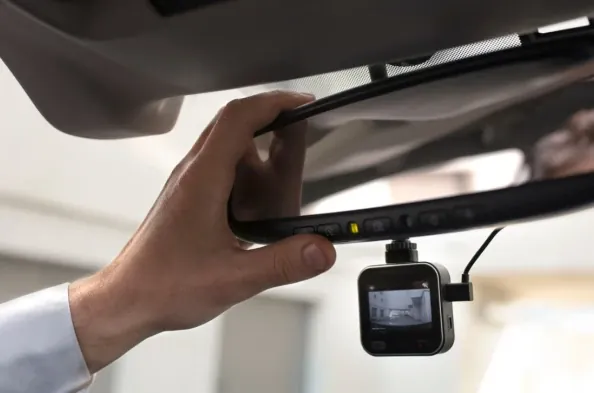In the world of vehicle monitoring, dashcams have become a staple, providing critical evidence for accidents and car-related incidents. However, the discovery of several critical security vulnerabilities in Thinkware’s F800 Pro dashcam has put millions of users globally at significant risk. These vulnerabilities, disclosed between November 2024 and March 2025, expose systemic security flaws that jeopardize user data and device integrity. This article aims to delve into the specifics of these vulnerabilities, their implications, and the recommended solutions to mitigate the associated risks.
Unveiling the Vulnerabilities
Extraction of Wi-Fi Credentials and Cloud Accounts
The most severe vulnerability identified, CVE-2025-2120, allows attackers with physical access to the dashcam to extract Wi-Fi credentials and cloud account details directly from the unencrypted /tmp/hostapd.conf configuration file. This vulnerability persists even after reboots, making it particularly dangerous for users parking their vehicles in public or semi-secure areas. For example, in busy urban settings, an attacker could easily gain access to a parked vehicle, retrieve the unencrypted credentials, and proceed with further compromise.
The ability to pull such sensitive information from the dashcam’s configuration file is unsettling. Once the Wi-Fi credentials are obtained, an attacker could potentially compromise the entire home network that the dashcam is connected to, leading to extensive damage beyond the vehicle itself. This vulnerability underscores the importance of encrypting sensitive data stored on consumer devices, especially those with inherently private and critical functions such as dashcams.
Default Credential Exploitation
Another significant attack vector involves the exploitation of default credentials, designated as CVE-2025-2119. This vulnerability enables attackers to connect to the dashcam using its factory-default password, which many users fail to change after initial setup. With access to the device, attackers can control the RTSP feed and Telnet services, providing them the ability to conduct live surveillance and download historical footage without the victim’s knowledge.
The implications of such unmitigated access are alarming. Attackers could monitor a user’s movements, gather sensitive information about their routines, and even manipulate or delete crucial video evidence. The use of default credentials is a known security flaw across many IoT devices, yet it continues to be overlooked by both manufacturers and consumers. Changing default passwords and disabling unnecessary services such as Telnet can significantly reduce the risk of unauthorized access.
Broader Implications of Vulnerabilities
Cloud Account Compromise
Thinkware’s vulnerabilities do not stop at physical or local network access; they extend to cloud accounts as well. CVE-2024-53614 details how a hardcoded AES-256 decryption key in the Thinkware Cloud APK leaves login traffic vulnerable to decryption and exposure. With this information, attackers can not only decrypt sensitive data transmitted over the cloud but also potentially gain unauthorized access to user accounts.
This level of access can be devastating, allowing attackers to manipulate cloud-stored footage, change account settings, or even perform ransomware attacks. The presence of hardcoded keys is a glaring example of poor security design, often criticized in the cybersecurity community. Thinkware acknowledged this vulnerability but has yet to provide a comprehensive fix for the associated hardware issues. Users are advised to upgrade to Thinkware Cloud APK v4.3.47 or higher to obtain the benefited mitigation.
File System Manipulation
Furthermore, vulnerability CVE-2025-2121 allows malicious actors to overwrite firmware or deploy malware via file system manipulation. This exploit can create persistent backdoors, allowing attackers to maintain long-term access to the device, or even inflict data destruction. These vulnerabilities operate silently, often without alerting users during the credential extraction or data exfiltration process.
The potential for such undetected exploits is concerning. Persistent backdoors could allow malicious actors to take over the device repeatedly, even after users have attempted to resolve the issue. In worst-case scenarios, ransomware could be installed, demanding payment to regain access to the system. The silent nature of these exploits highlights the need for robust security measures and constant vigilance by users to monitor and manage their devices effectively.
Addressing the Security Flaws
User Recommendations and Precautions
In light of these discoveries, Thinkware has recommended several actions for their users to mitigate these risks. Users are strongly advised to change the default Wi-Fi passwords immediately, disable Telnet access, restrict RTSP access, and regularly monitor the /tmp/hostapd.conf file for unauthorized changes. Moreover, upgrading to the latest version of Thinkware Cloud APK is crucial to benefit from the latest security patches.
These measures, though crucial, reflect a broader problem within IoT security – the reliance on “security through obscurity.” This approach assumes that potential attackers will not discover vulnerabilities due to the perceived complexity and hidden nature of the code. However, as these discoveries indicate, such practices are insufficient in the face of determined and skilled adversaries.
Industry-Wide Concerns and Future Directions
Dashcams have become essential in vehicle monitoring, offering valuable evidence for accidents and other car-related events. Nonetheless, the identification of several serious security vulnerabilities in Thinkware’s F800 Pro dashcam has put millions of users worldwide at considerable risk. These vulnerabilities, made public between November 2024 and March 2025, reveal significant security issues that threaten both user data and the integrity of the devices. This article seeks to explore the details of these security flaws, their potential impact, and the expert-recommended measures to mitigate the associated risks. Addressing these concerns is crucial for ensuring user safety and maintaining trust in dashcam technology. The widespread use of dashcams for personal, commercial, and legal purposes underscores the importance of securing these devices against potential threats. As technology advances, so does the sophistication of cyber threats, making it imperative to stay informed and proactive in addressing security issues in any digital device.






